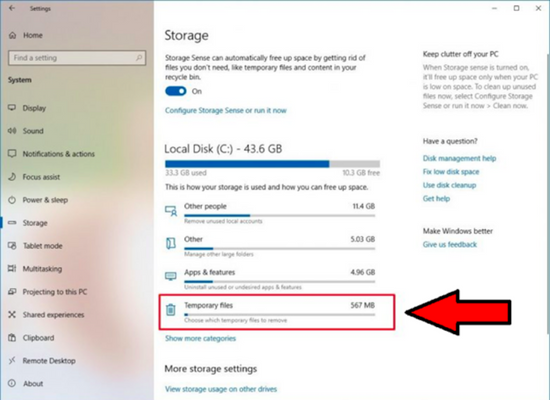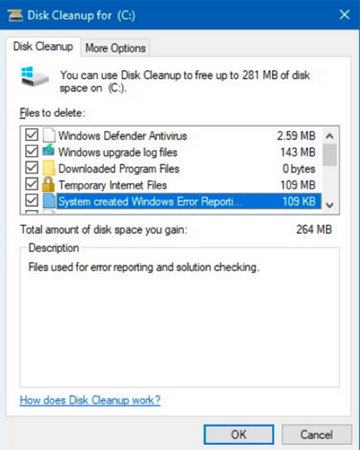Heaps of files and folders get created during the normal course of using your computer, including temporary files. In fact, some of you may noticed that the size of C drive getting full, which is primarily based on these temp files. Good news is that you can remove temp files in Windows 10 using a few methods. We’re here to share two simple ways to delete temp files in Windows 10.

Have you noticed that your main hard drive's storage capacity, the one where you have installed your operating system, is decreasing without even copying or duplicating files or downloading something? This happens because of the presence of 'temporary' or 'temp' files. Whether you like it or not, they just happen to exist, but they can be removed easily.
What Are 'Temp' Files?
Temporary, or temp, files are the files that are stored on the computer when an application is running and trying to use or refer to your system information. They are created temporarily, but when after closing an application, oftentimes, temp files remain. They may be designed that way for that application; they will not create another temp file when opened again.
The files being categorized as temporary ranges from leftovers from an application to the error reports being automatically submitted after a system failure. They don't usually cause any issues, but the accumulation can give you storage problems for your hard drive. There are steps that you can conveniently do to remove these temp files.
How To Delete Temp Files In Windows 10?
Manual Deletion
To manually delete the temporary files, here are the steps you have to follow:
- On Windows 10, search for the 'Settings' app and open it.
- Click 'System.'
- Click 'Storage'.
- For Windows 10 versions 1903, 1909, 2004, and the later releases, under the section 'Local Disk,' click on the option' Temporary files.' For Windows 10 versions 1809 and earlier, click on the option 'Free up space now.'


- Select all the temporary files that you have to remove permanently.
- Click the button 'Remove files.'
After completing the steps, all the selected temporary files will be permanently removed from the computer. You can refresh your Desktop screen and observe how your main hard drive is gaining free space for storage.
Automated Deletion
If you want to automate things, you can do so by following these steps:
- On Windows 10, search for the 'Settings' app and open it.
- Click 'System.'
- Click 'Storage'.
- For Windows 10 versions 1903 or later releases, under the section ' storage,' enable the toggle switch. For Windows 10 versions 1809 or earlier releases, turn on the toggle switch of 'Storage sense.'
After completing the steps, Storage sense will automatically delete most of the temporary files, including those stored beyond 30 days in the 'Recycle Bin.' Additionally, you can always select the option 'Configure Storage Sense or run it now' (For Windows 10 1903 version and the later ones) or 'Change how we free up space' (For Windows 10 1809 version and the earlier ones) to adjust the settings for clean up.
Disk Cleanup
Another popular way of removing temp files is through the 'Disk Cleanup' tool. Follow the steps below on how to use it for deleting temp files:
- On your Windows 10, open 'File Explorer.'
- Click 'This PC.'
- Right-click on the hard drive where the Windows 10 is installed, and select the option 'Properties.'
- Click the button 'Disk Cleanup.'
- Click the button 'Clean up system files.'
- Select all the items you want to delete.

- After selecting, click on 'OK.'
- Finally, click the button 'Delete Files.'
After completing the steps, all the temp files you have selected will be permanently deleted on your hard drive, and it will gain the free space it needs for storage.
Summary: Delete temp files in Windows 10
- Open File Explorer from the taskbar or the Start menu, or press the Windows logo key + E.
- Select This PC from the left pane.
- In the search box in the top-right corner, type %temp% and press Enter.
- Delete the files or folders located in this folder.
- Restart your computer.
Conclusion
Temp files are not harmful, and their removal won't also cause damage. You have to be aware of your existing storage to think that you need to perform the steps mentioned.
If not, then you might not notice how the temp files are consuming the free space of your hard drive. There are also third-party programs that can delete log and temp files in windows, but there will be a risk for purchasing.